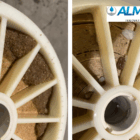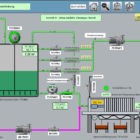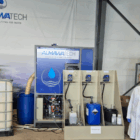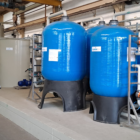Fittings are essential components in industrial water and wastewater treatment, used to control, regulate and shut off fluid flows in piping systems. They enable the safe and controlled operation of water treatment and wastewater treatment plants by influencing the flow, pressure and direction of water or process fluids. Valves are used in almost all sections of a plant, whether for regulating the inflow, shutting off pipes or for pressure control in process stages such as filtration, reaction or heat exchange.
Table of contents
Types of fittings in water and wastewater technology
Various types of valves are used in industrial water technology, which are tailored to their specific tasks and operating requirements. The most common fittings include
Shut-off valves:
- Gate valves: These valves are used to completely open or close the flow in piping systems. They are mainly used in large-dimensioned pipelines and are particularly suitable for water with a low particle density.
- Ball valves: Ball valves consist of a spherical disk with a through hole that is opened or closed by turning. They are suitable for quick shut-offs and are often used in smaller pipelines.
- Butterfly valves (butterfly valves): These valves are often used in water circuits and are ideal for applications where a fast flow or shut-off is required. Butterfly valves are compact and lightweight, which makes them attractive for large volumes of water.
Control fittings:
- Control valves: These valves are used for fine control of the flow rate and pressure in water treatment processes. In automated systems, they are often equipped with servomotors that adjust the valve opening level depending on process variables such as pressure, flow rate or temperature.
- Pressure reducing valves: These valves reduce the pressure in a piping system to a set value. They are necessary to protect sensitive system components from excessive pressure.
Check valves:
- Non-return valves: These prevent water or waste water from flowing back in the wrong direction. They are particularly important in pump systems and cooling water circuits to prevent damage to system components caused by water hammers.
- Spring-loaded check valves: These specially designed valves are often used in circuits with pulsating or intermittent operation to prevent the backflow of water in sensitive processes.
Safety fittings:
- Safety valves: These valves protect systems from overpressure by automatically opening and relieving pressure at a defined pressure value. They are an essential component of pressure boilers and other high-pressure systems.
- Overflow valves: These valves ensure that excess water or pressure is relieved by opening when a certain pressure level is exceeded, thus stabilizing the system.
Technical background
Valves play a central role in process control and plant safety. The selection of the right valve depends on several factors, including the type of fluid (water, wastewater, chemicals), temperature, operating pressure and chemical properties of the medium. In water and wastewater treatment, valves often need to be resistant to corrosion, deposits and the chemical properties of the water or wastewater.
Special requirements for fittings in water treatment are:
- Corrosion resistance: As many water treatment systems work with aggressive chemicals, such as acids, alkalis and salts (e.g. in reverse osmosis), corrosion resistance is an important factor. reverse osmosis or chemical precipitation), fittings must be made of corrosion-resistant materials such as stainless steel, plastic (e.g. PVC, PP, PVDF) or specially coated metals.
- Temperature resistance: In processes where the water is heated or cooled, such as in heat exchangers or boiler systems, valves must be designed for operation at high or low temperatures.
- Pressure resistance: In high-pressure systems, such as reverse osmosis or pump systems, fittings must withstand the specific operating pressure to ensure safe operation.
Application in practice
In industrial practice, valves are used in many critical areas:
Cooling water systems: Control valves such as pressure control valves and non-return valves are used here to control the flow and pressure of the cooling water. Valves help to optimize heat transfer in heat exchangers and minimize the risk of corrosion due to biofouling and deposits.
Membrane systems: Control valves are used in reverse osmosis systems to control the operating pressure and ensure optimum filter performance. Non-return valves prevent concentrated wastewater from flowing back into the system and protect the membranes from damage.
Wastewater treatment: In biological reactors such as activated sludge or membrane bioreactors (MBR), shut-off valves play an important role in controlling the inflow and return sludge. In sludge treatment plants, safety valves are used to control the pressure in digesters and ensure safe operation.
Chemical feed systems: In systems where chemicals are used to precipitate or disinfect the water (e.g. precipitation, flocculation, disinfection), dosing valves are crucial for the precise addition of chemicals. Control valves control the exact amount of chemicals that are added to the process.
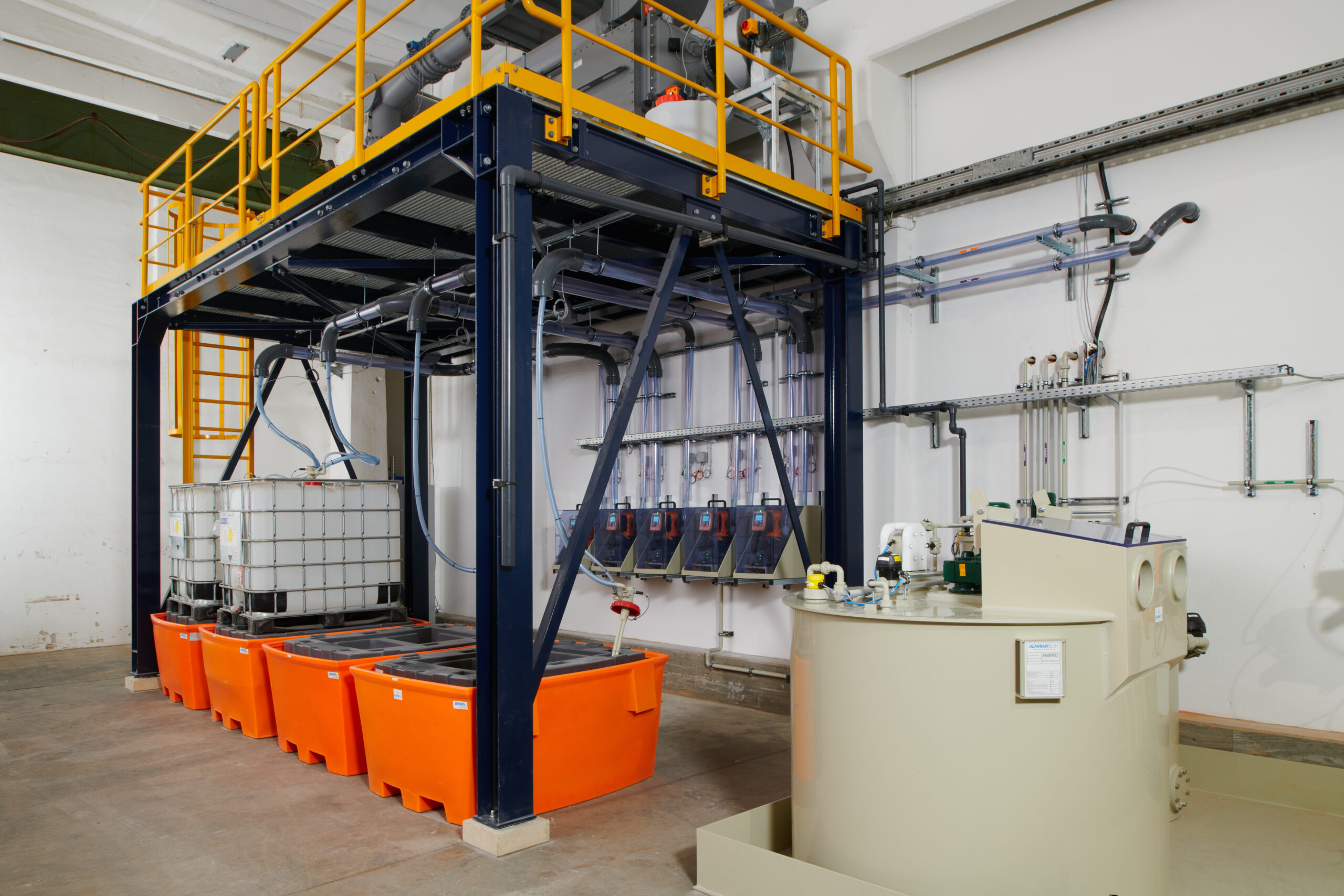
Photo: Dosing station from IBC delivery containers with WHG collection tray and lime milk dosing and preparation station(product overview of dosing technology)
Maintenance and servicing
Regular maintenance of fittings is crucial to ensure their proper functioning and longevity. In practice, deposits or corrosion can build up on fittings, which can lead to leaks or blockages. The usual maintenance measures include
- Check for leaks and wear.
- Cleaning of deposits or biofilms, especially in cooling water circuits and waste water systems.
- Replacement of seals and moving parts to ensure proper functioning.
Conclusion
Valves are indispensable components in industrial water and wastewater treatment, ensuring the safe and efficient operation of systems. The correct selection and positioning of shut-off, control, non-return and safety valves is crucial for process control, protection of the system technology and operational safety. In-depth knowledge of the operating conditions and the medium is necessary in order to specify the optimum valves for each application and ensure the smooth operation of the systems in the long term.


